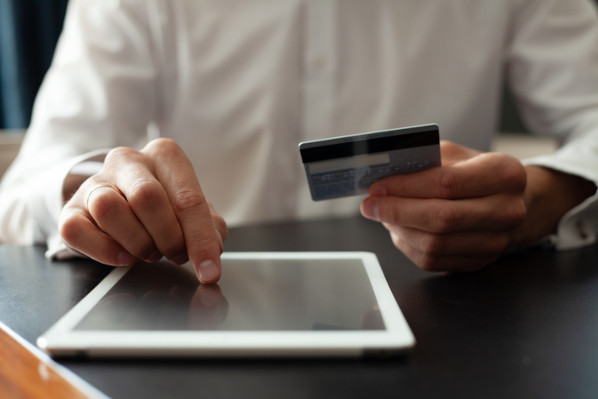1. Multiple Login Options
While it may be more convenient for your marketing efforts to require customers to create an account before placing an order, this approach does not always benefit your customers. You risk losing them if you do not offer a guest checkout option. Remember: you can always ask them to create an account after they have made a purchase and feel more connected to your brand.
You should also consider providing customers with the option to log in using one of their social media profiles, such as Facebook or Twitter. This can reduce the hassle of signing up, as it makes the login process much quicker.
2. Authentication/Login Layers
Customers who have accounts with you want to know that their information is secure—even if they forget their login details. To give them peace of mind, ensure that you require multiple layers of verification before recovering their login information. For example, if a customer forgets their password, your website can require them to answer multiple security questions before sending an email to a pre-registered address.
3. PCI Compliance
The Payment Card Industry Security Standards Council (PCI SSC) establishes a set of Data Security Standards (DSS) that apply to all merchants, regardless of revenue and transaction volume.
If you host and manage your own e-commerce platform, you are responsible for ensuring PCI compliance at the required level, based on the volume of credit or debit card transactions over a 12-month period. Most SaaS shopping carts come with built-in PCI compliance.
4. Integrated Payment Processors
While you can use payment processors like PayPal, Stripe, Google Pay, and Amazon Pay if you have a very small website and low transaction volume, it is far better to integrate the payment process directly into your website.
With some processors, online shoppers are redirected away from your site to a payment page that doesn’t resemble your website—disrupting their experience, breaking the visual connection with your brand, and potentially causing confusion or anxiety that may lead to cart abandonment.
An integrated payment solution that processes customer information on your own server allows for greater flexibility and customization. It also provides a much smoother experience for your customers.
5. SSL Certificates
Every e-commerce website needs an SSL certificate to protect customers’ personal and credit card information. SSL is a standard security technology that ensures all data transmitted between a web server and a browser remains private.
Without it, hackers can steal your customers’ information—and online shoppers won’t feel safe submitting their details on your site. Shoppers will know your site is secure when they see “https://” at the beginning of your URL, rather than just “http://”.
6. Credit Card Logos and Security Seals
To help online shoppers feel more comfortable, you can add credit card logos and security seals to your website to reassure them that your site is a safe and trustworthy place to do business. Display these at least during the cart and checkout stages of your site, or even consider integrating them into your website’s footer.
7. Payment Buttons
The less time customers spend searching for the payment option, the sooner they will take action and make a purchase. We recommend placing a prominent call-to-action button—highlighted with a distinct color—at both the top and bottom of your site.
8. Visual Checkout Process
If you need to spread the checkout process over multiple pages, provide shoppers with a visual indicator of their progress and how much time they have left.
9. Return & Refund Policy
Online shoppers cannot see or feel the product before purchasing, which can make some hesitant to buy. To help alleviate this concern, make your return and refund policy easily accessible. Consider making it a part of the checkout process, and even place it in the footer of your website.
10. Clear Path to Contact Information
Online shoppers want to know they can easily reach your company for support—especially if they are first-time customers. If you do not provide them with a clear path to your contact information, they may hesitate to purchase from you or may not receive the support they need to complete a transaction.
Include contact details such as a phone number (with business hours), email address, physical address, and social media accounts. Even better, list this information in text form (not as an image) so that it can be picked up by search engines in local searches. Some retailers also prefer to offer live chat options—just make sure you integrate it with your customer profiles so you can build smarter marketing campaigns in the future.
11. Detailed Pre-Payment Confirmation Page
Before allowing online shoppers to make a payment, direct them to a detailed confirmation page. This page should allow them to review their cart, provide the option to change quantities or remove items, include the final price (including taxes and shipping fees), and indicate when items will be shipped.
12. Optimized Checkout Page Design
The best checkout pages are functional, secure, attractive, and easy to use and navigate. The last thing you want is for a potential customer to lose interest at the final moment simply because they cannot use your system or lack confidence in it.
13. Mobile Payment Capability
Customers are not just buying on desktops. They also shop on mobile devices, so your payment gateway must be responsive and easy to navigate for mobile users. If you have a mobile app, you may also need additional functionality to process payments on iOS and Android.
14. Confirmation Emails
Finally, you will want to create a confirmation email that includes the order number, products, payment and shipping information, and your return and refund policy—just in case something goes wrong.
Setting up your e-commerce business is exciting, even though all the details can be a bit overwhelming. With a little planning, you will be well-equipped to handle e-commerce transactions effectively.


